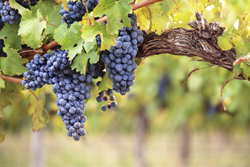WinePen tests grape ripeness on the vine
Recent EU quality legislation in the viticulture industry is putting a lot of pressure on small vineyards. To survive, they will need to increase the quality of their grapes and reduce the production of low-quality wine.Thanks to the EU-funded PREMIVM(opens in new window) project, winemakers now have a device that can quickly and easily monitor grape ripeness without any damage to the fruit. The device uses fluorescence to measure the concentrations of various chemicals related to ripeness, and comes with built-in software.Vineyards in the Czech Republic, Spain, Italy and Portugal participated in the research and testing process. Researchers used a wide range of grape varieties to build a reference library that was used to calibrate the prototype device. The device software provides useful statistical analyses based on the data collected, telling farmers about grape ripeness and sugar content. It can also coordinate Global Positioning System data, has an online interface, and can be accessed from a computer, tablet or smartphone.PREMIVM's demonstration prototype was successful — results are internally consistent and they correlate well with conventional methods of measurement. PREMIVM has thus developed a device that could help small EU vineyards remain competitive in the face of challenging legislation.







